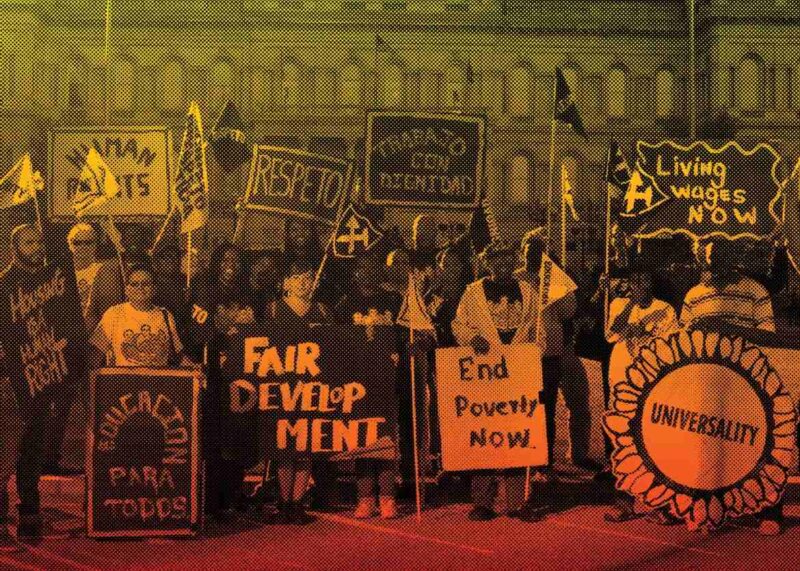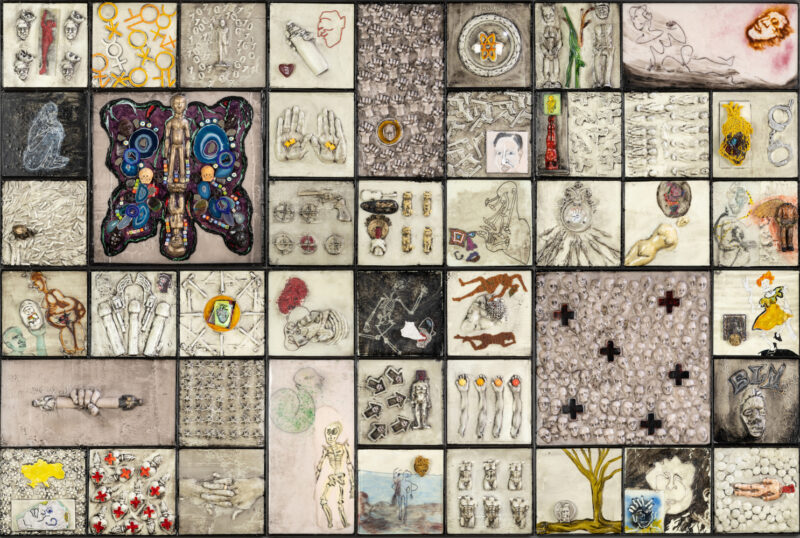Graham Coreil-Allen’s current project, New Public Sites, is an interactive, free walking tour of Station North Avenue, organized in conjunction with Invited: Celebration Station, a current MICA exhibition.
Graham Coreil-Allen: The core strategies of my New Public Site project are empowering pedestrians, pointing out otherwise overlooked features of public space and figuring out how and why public space is the way it is. The acts of walking, looking/representing, and understanding public space grow from an intense interest in improving our shared urban spaces and strengthening political freedom among people.
a) As Occupy has so clearly demonstrated, simply being in public space can be a powerful political act. Is it a public space if no one stands in it? Perhaps on paper, but in reality public space is what we make of it. Therefore I have chosen the walking tour as a way to show participants that all of us are entitled to use and thereby create public space. It doesn’t just have to be in Zuccati Park or on the mall in DC, even a boring parking lot can be interesting and useful for the creative purposes of neighborhood conspirators. Be it a farmers market, a protest or a pickup game of street hockey, the space is ours – but only if we get out there and JUST DO IT.
b) New Public Sites is based of the radically expansive understanding of public space as any area physically assessable to most people within a given community. This definition disregards whether or not the space is privately owned and includes anything from median strips and berms to corporate lobbies and parking lots. Most people don’t realize how much public space exists all around us. That being the case, I have taken to creating a bunch of new and appropriated terms to help identify and describe these otherwise “invisible” public areas. By giving them names, I am trying to help people realize that these space are indeed public while also creating a shared languge to start the conversation on how these places affect our lives.
c) If we truly want to activate the latent civic potential of new public sites, we need know where they came from, why they were designed that way and how they exist the way they do. This is where the walking tour really gets interesting – understanding the mechanics of urban planning visavis the anarchy of street life. Along the tour I might point out how spiked walls, intimidating signs and looming surveillance cameras make us feel like we should act normal and be on our way. But the question is then why do these cameras exist? To scare away riffraff. Are we riffraff? No. Can we then hang out here and have fun? Yes. Using the walking tours and words of New Public Sites we can identify different type of public space, learn about why they were designed as such, and then get started talking about whats bad about them, whats good, and what we can do to make them better for the future.
CO: How long have you been ‘curating’ walking tours as part of your art practice? What made you want to do this and where did the inspiration come from? Were you always a walker and hiker?
GC-A: My biggest challenge as an artist has been trying to integrate my anarchist beliefs in freedom, voluntary association and mutual aid, with my interests in urban planning and aesthetics. I started the New Public Sites project in October of 2007 as a way to bring attention to the socially and economically loaded vacant lots around my neighborhood at the time – Bushwick, Brooklyn, NY. I used subtle installations of flagging tape to mark off a series of telling, beautiful public spaces and distributed free maps through local businesses that invited participants to explore the sites on their own.
The problem I ran into was that beyond my direct friends, I had no idea who all was actually going to see the public spaces. About a year later I moved to Baltimore to go to grad school at MICA and decided to restart the project. This time I decided that I needed to take people out to see the new public sites in person so that I could directly show them what I considered so fascinating and then see how they might respond.
Much of my inspiration has come from Situationist theory, political protest phenomena such as Critical Mass and Reclaim the Streets, and post-minimalist and interventionist artists such as Robert Smithson and the Yes Men. I can say that I have always been a pedestrian explorer. Growing up in the Tampa suburbs the fastest path to freedom under the age of 16 was on a bicycle. I would ride my bike to the Hillsborough River and look for arrowheads or to Terrace Plaza strip mall to go dumpster diving. I also spent thirteen years in the Boy Scouts, culminating a love for nature, my Eagle Scout rank and an appreciative eye for uniform insignia.
CO: When I was a kid I used to go on ‘Volksmarches’ – they were group events, walks and hikes where people got badges and medals for finishing. I think the context of these walks was athletic and cultural – my friend’s dad, who took us, used to live in Germany so it was a German thing. What you are doing is similar in many ways, but the context of your project is completely different. I have seen your work in exhibits at MD Art Place, at MICA, and this current tour is part of MICA’s interactive exhibits in Station North. Do you consider your walking tours to be performance art, experiential art, conceptual art – or do none of these labels interest you? I think ephemeral/experiential art works tend to be defined by their context. How does the context of your walks affect their meaning and significance?
GC-A: Art labels are in the eye of the beholder, but the closest one that fits my work is “interventionist art”. For me this means reaching broader public audiences by operating outside of the gallery with design, objects, and situations aimed at improving our cities and society – public actions for the common good. Context and audience always define the work, and my projects take on different meaning depending on where I’m at and whom I’m with. Most of my projects are rooted in art exhibitions, outdoor festivals or neighborhood community events. While interpretations of my maps, videos and tours always vary, those people coming from an art backgrounds seem to look at it as performance or relational art, while festival goers see it as entertainment or education and community event participants embrace it as activism and celebration.
CO: How do you characterize your personal relationship with Baltimore City? It is a physical one – you live here, eat here, work here, etc. – but in what other ways does this city affect your thinking, emotions, and in other ways? I am curious what your opinion is of cities in general, and of Baltimore in particular. What are your goals for Baltimore City? Do you think visual artists can make a difference in these goals?
GC-A: Cities have a romantic, place-based mystique about them that is harder to find in areas of sprawl. People move to new cities to find opportunities, create new identities, be around diverse cultures and ultimately find freedom. This is why I believe in cities and this is why I love Baltimore.
Large enough to support a diverse arts community yet small enough for easy comprehension, Baltimore makes an excellent arts town by being unabashedly weird and unpretentious while providing affordable rent for regular indie rockers and guru, subcultural-truants alike. Having moved here from New York City, I was immediately impressed with Baltimore’s non-competitive, relaxed, and supportive arts scene. Artists aren’t necessarily here to prove something, get famous or make it rich – we are here to do what we love among a community of like-minded, experimental visionaries. The accessibility of finding needed space is as easy as renting cheaply, applying for an Operation Storefront or Adopt-A-Lot space, or even squatting on derelict land.
Baltimore City needs to make all city-owned, vacant property and buildings freely accessible to non-profit, community and art-based organizations, rent free. Vacant urban green space and remediated suburban land should be repurposed for growing food and providing farming jobs. Convert all highways to linear districts of recreation, entertainment and sustainable commuting leading to and from the rebuilt Inner Harbor of Infinite Freedom where people-owned festivals and democracy take place year round. There is no question in my mind that artists can make this happen. Look no farther than Current Space, The Compound, Boone Street Farm, or the Baltimore Bike Party to see that we are making a better place.
CO: There is definitely a sense of humor in your description of the ‘nature walk’ through Baltimore City’s urban and neglected neighborhoods that I respond to. Reclassifying certain architectural structures in a nature context is both funny, a bit sarcastic, but also transformative. What role does humor play in your projects? What kind of sense of humor appeals to you the most?
GC-A: I am most attracted to dark, absurdist humor, such as Tim and Eric, Ryan Trecartin and the work of local artists like Jimmy Joe Roche and Robby Rackleff. Relying solely on a strictly serious political and architectural critique of public space would leave new public sites unchanged – invisible and boring. Humor is a way for me to connect participants with our public spaces in ways that are new, entertaining and insightful. Describing a vacant lot surrounded by billboards as “Retail Ad/Venture” within “Clear Channel Commons” is a lot more interesting than just pointing out that advertising shapes space.
It’s important for me to note that while I use humor, sarcasm and parody in many of my New Public Sites terms and definitions, the uniform I wear and the overall project is completely genuine and not ironic. I present myself as an expert on public space with patches and buttons but I always make it clear to my audiences that the uniform does not represent any kind of institutional authority. By only representing me and my ideas, the uniform shows that authority is ours to be appropriated. I have as much to learn from New Public Sites participants as they do from me. All of us are experts and agents within the new public sites of our shared daily lives.
More information about New Public Sites is available here.




